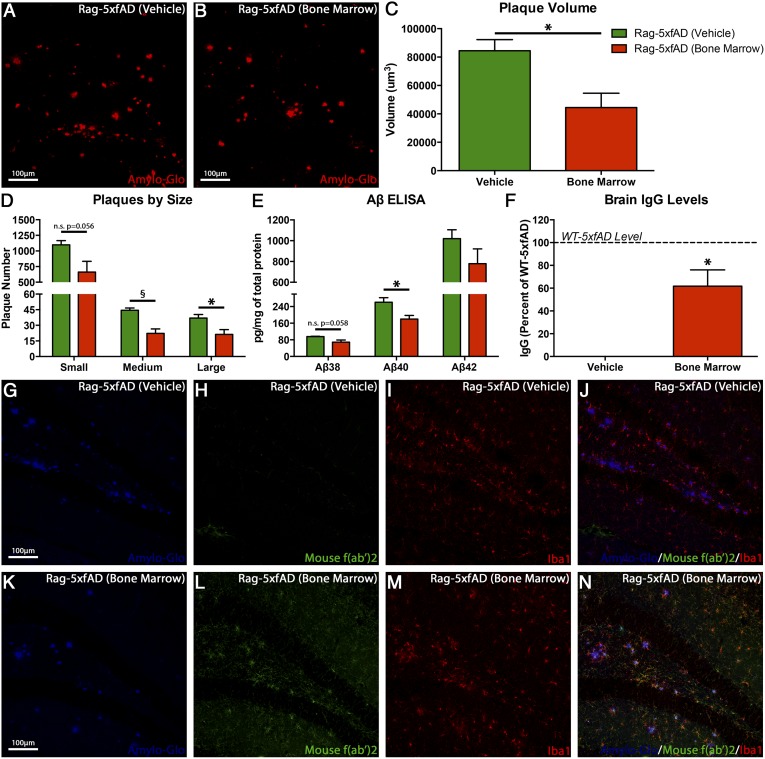Fig. 8.
Bone marrow transplantation reduces amyloid in Rag-5xfAD mice. (A and B) Representative immunohistochemical images demonstrate a significant reduction in amyloid burden in the dentate gyrus of animals receiving bone marrow (B) compared with those receiving vehicle injections (A). (C and D) IMARIS-based 3D quantification of Aβ confirms a reduction in both total Aβ volume and the numbers of medium and small plaques (P < 0.05). The number of small plaques trended lower in bone marrow-treated animals (P = 0.056). (E) Multiplex ELISA confirmed the IHC findings as Aβ40 was significantly reduced, and Aβ38 and Aβ42 trended down as well. (F) ELISA analysis of brain IgG levels demonstrated elevated levels in mice receiving bone marrow, although not quite at the same levels as WT-5xfAD mice. (G–N) Importantly, bone marrow-treated Rag-5xfAD mice also exhibit similar and extensive immunohistochemical labeling of microglia with IgG, as described above in WT-5xfAD mice (Fig. 5). Unsurprisingly, this labeling was absent in mice receiving vehicle injections. Data are represented as mean ± SEM. ANOVA, P < 0.05, and Fisher’s PLSD post hoc, *P < 0.05, §P < 0.01; N, 4–5 per group.

